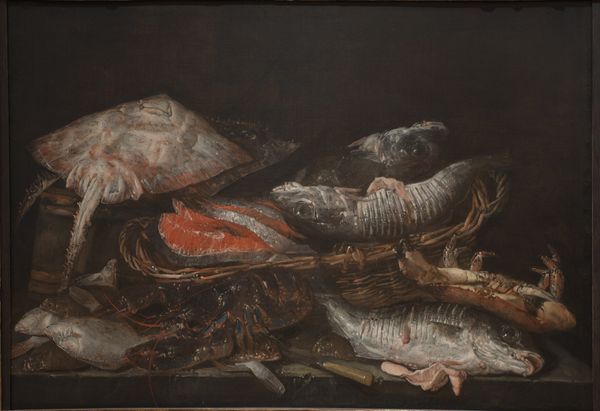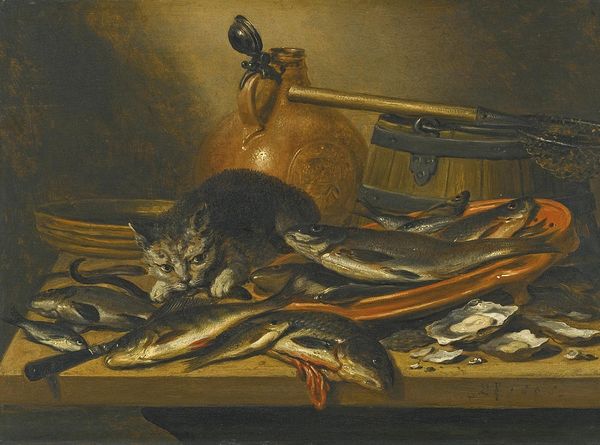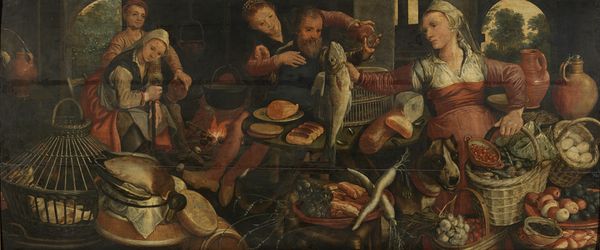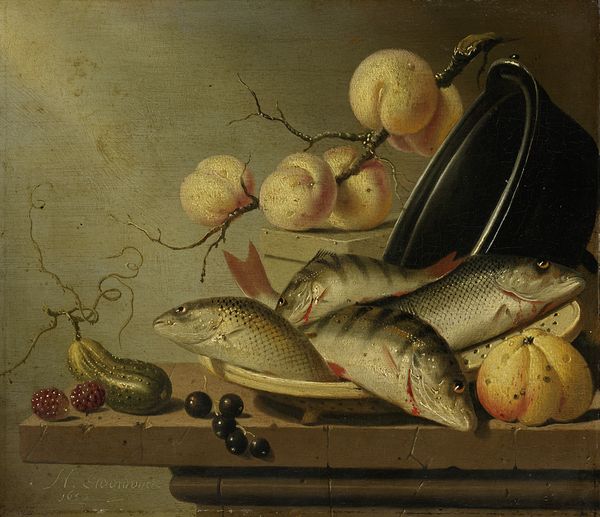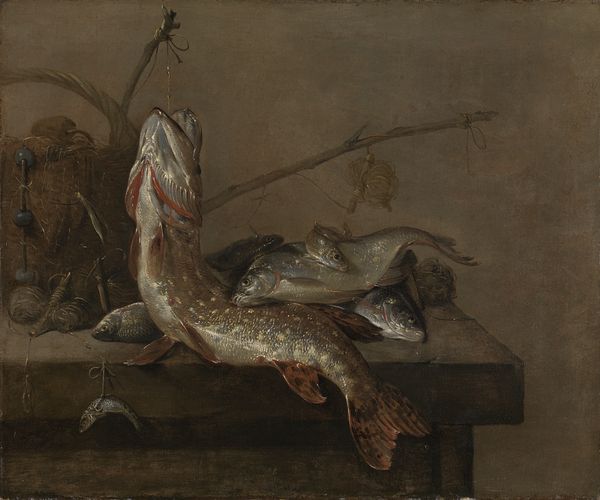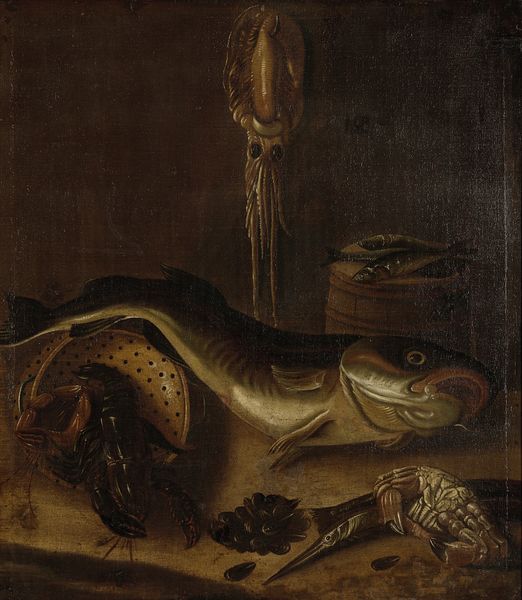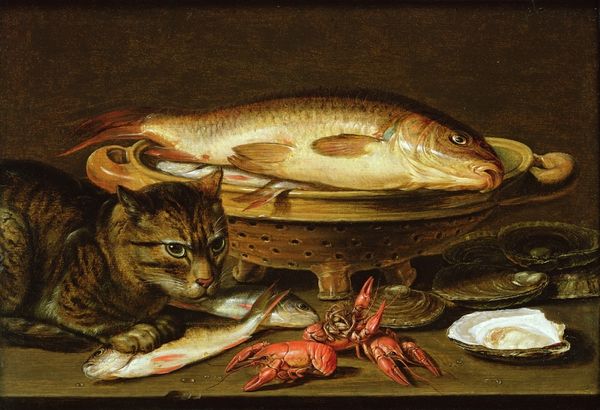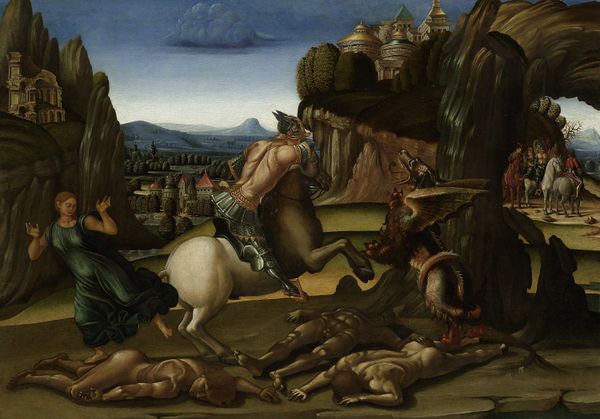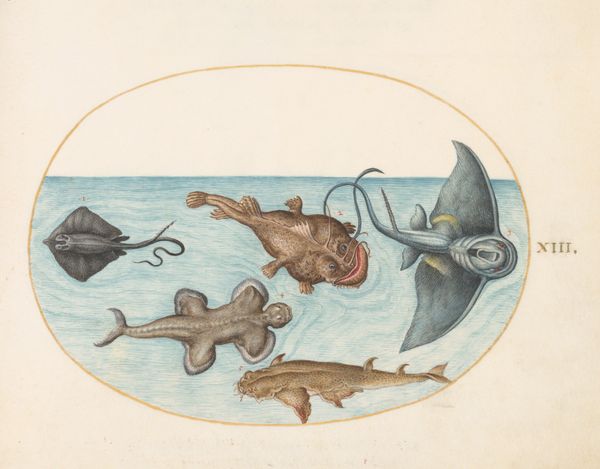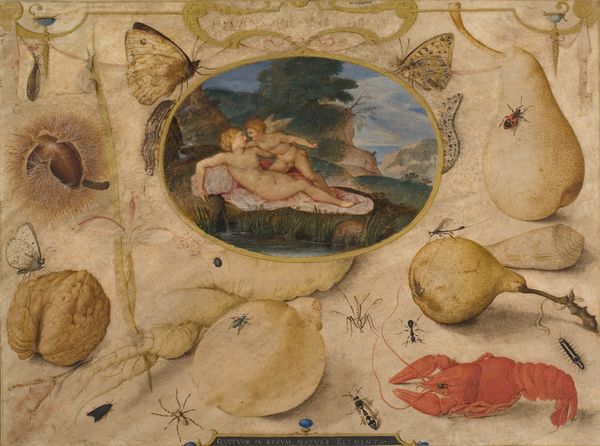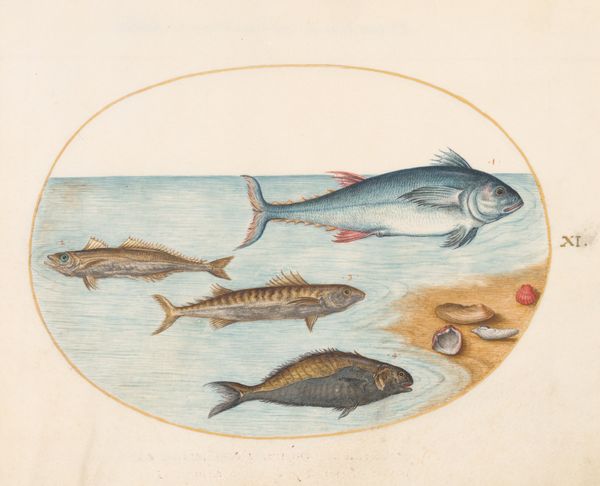
painting, oil-paint
#
baroque
#
dutch-golden-age
#
painting
#
oil-paint
#
oil painting
#
realism
Dimensions: height 54.5 cm, width 92 cm, depth 8.5 cm
Copyright: Rijks Museum: Open Domain
Editor: This is Willem Ormea's "Still Life with Fish" from 1638, painted in oil. There's something a bit unsettling about how real the fish look. What do you see in this piece? Curator: It's unsettling precisely because it aims to capture a specific reality, one deeply embedded in the socioeconomic conditions of the Dutch Golden Age. These still lifes were not merely decorative; they reflected the Netherlands' burgeoning maritime power and its dominance in the fish trade. Who had access to which kind of food? These things signaled social standing and national identity. What do you think about that basket? Editor: At first glance, it seemed secondary, just an addition to the scene. But I see what you mean— it almost mirrors the bounty in the painting itself, like a symbol of accumulated wealth. It is birds in the basket! Does the artist seem to have some comment about death by displaying fish and fowl on the same canvas? Curator: Absolutely, it is fascinating, isn’t it? Think of still life as more than just visual representation. This "nature morte" touches on themes of mortality and the fleeting nature of earthly pleasures. These sumptuous displays of food are shadowed by awareness of death, decay, and perhaps even the inequalities inherent in a society where access to such bounty was far from universal. Consider that many were deprived and were made invisible. The darker backdrop throws into relief that privilege. Editor: I didn't consider how much these images might reflect disparities of access and visibility. I think looking at it that way is incredibly relevant today, thinking about food insecurity and representation. Curator: Exactly. Art from the past is not static; it speaks to us in the present if we listen critically. These historical contexts provide new avenues of thinking and questioning our contemporary issues. Editor: That’s so helpful. Now I see it’s much more than just fish and birds!
Comments
No comments
Be the first to comment and join the conversation on the ultimate creative platform.
